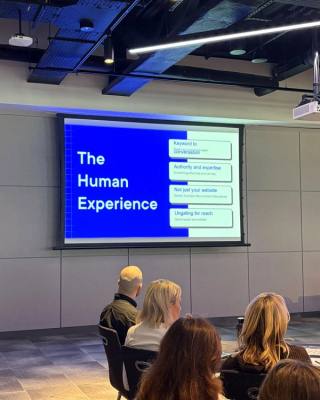Digital personalisation is now a standard user exception, not a value-add. Yet the path to delivering meaningful, scalable personalisation remains fragmented. Two dominant strategies have emerged: segmentation and generation. Both use data to tailor digital experiences, but they differ in how they define audiences and deliver content. Understanding when to use each approach is essential for any organisation seeking to connect directly with their target audience.
Segmentation and generation: What's the difference?
Segmentation has been the cornerstone of digital personalisation for over a decade. It involves dividing users into cohorts based on shared attributes (age, location, behaviour, buying history etc) and then serving pre-built content based on those profiles. It’s precise, predictable, and proven, and is now easier to implement than ever thanks to real-time AI user categorisation.
Generation, by contrast, is powered by generative AI. Instead of drawing from prewritten content or logic trees, it creates unique responses or experiences in real time based on individual user data, preferences, or interactions. This means each user receives a highly engaging, and highly effective, range of content.
Both methods use data, but they apply it differently. Segmentation simplifies content delivery through structured rules and pre-planned user pathways. Generation uses language models to create content dynamically, enabling a more fluid and truly responsive user experience.
When segmentation is the smarter play
Segmentation shines in structured environments where compliance, consistency, or control are critical. Healthcare sites, for example, often need to guarantee accurate, up-to-date and relevant content. Segmented email campaigns, product recommendations, and homepage variations remain highly effective in these contexts.
More importantly, segmentation scales reliably. Once the rules and content are set, delivery is automated across thousands or millions of users. Brands with stable audience categories and repeatable user flows benefit most. If you already have a clear understanding of who your user groups are, and what they want, then segmentation can offer dramatic benefits.
When generation offers the edge
Generative AI design thrives in discovery-led journeys. News publishers, media platforms, education services, and SaaS products can use generation to surface content in ways that feel personal without requiring pre-built journeys. It enables product copy, summaries, or support responses to be tailored not just by user group, but by the individual in the moment.
Generation also allows teams to move beyond hard-coded logic. Instead of scripting every scenario, they can train models to deliver on-brand, context-aware outputs for every user. The result is an experience that feels more adaptive and "human", particularly in high-variability environments.
However, generation demands rigorous guardrails, strong prompt engineering, ethical data use, and robust brand alignment. Without these, the experience risks becoming inconsistent or even untrustworthy. Ultimately, choosing a generative solution means trusting a LLM to talk to your users, a risk most firms aren't willing to take.
A false dichotomy?
Whatever their differences, segmentation and generation share crucial similarities. In one sense, they are simply different degrees of the same process. Segmentation divides users into a handful of "buckets", whereas generation builds a new "bucket" for each new session. Hypothetically, a segmentation strategy could deliver thousands of pre-defined and pre-built permutations of content and layouts, providing an experience indistinguishable from that of AI-powered generation.
These two systems can also happily coexist. For example, a landing page might be segmented by user intent, but the explanatory copy beneath each CTA might be generated to reflect individual browsing history.
The real challenge isn’t choosing one method over the other, but instead understanding when each delivers the most value and how to integrate them into a cohesive user experience.
Choosing based on business maturity
For organisations early in their digital transformation, segmentation offers a safer, more manageable starting point. It builds foundational data hygiene and operational discipline. For more mature teams, with established data pipelines, content models, and governance structures, the powerful capabilities of generative tools will become more tempting.
Before deploying either strategy, weigh up the costs and benefits. Committing to a generative strategy may be worth it, but only if you can accept the risks that come from placing unsupervised AI generated content in front of your users.
New questions
User expectations have already shifted. Your audience wants digital experiences that feel effortless, relevant, and bespoke. The question of personalisation is no longer "if" but "how". If you want a hand answering that, get in touch with our team.









